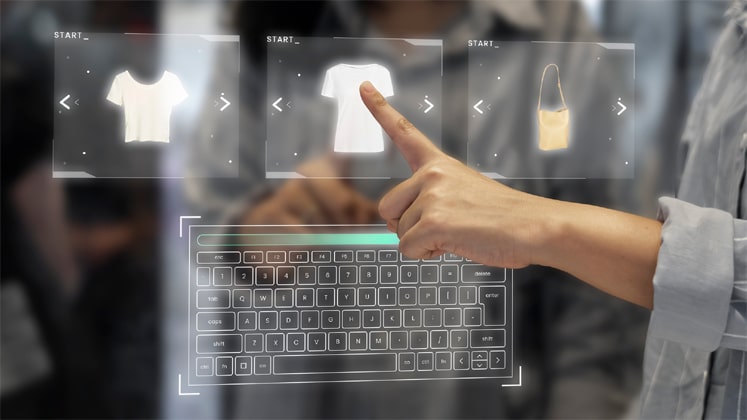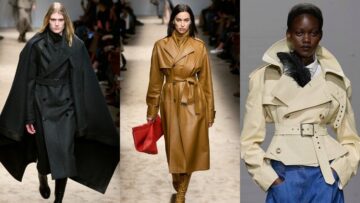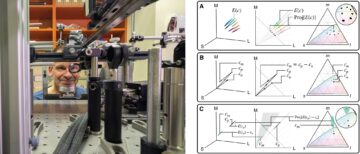Once started as a futuristic concept, now slowly AR/VR technology is turning into a mainstream reality – all thanks to the fashion retail industry that strives to evolve with changing consumer requirements. This adoption is now much easier due to the availability of affordable hardware, software and internet connectivity. As per reports from IDC, the retail sector is expected to contribute significantly to the growth of the AR/VR market, with a projected CAGR of 54 per cent and a market value estimated to reach US $ 72.8 billion in 2024.
Elevated beyond gimmickry, retailers mainstreaming the concept
Imagine stepping into a fashion store and being able to try on countless outfits without changing clothes or even leaving the spot or visualising how a pair of shoes would look on your feet without actually trying them on! This is the reality of how the fashion industry has slowly started operating differently.
The concept is simple – to allow customers to virtually try on clothes before they buy them. This not only saves time and hassle for both the customer and the retailer, but it also allows for a more personalised shopping experience.
In addition, it can help reduce returns and increase sales. One popular method is through the use of dedicated kiosks or in-store tablets. Customers use these to scan their body type and then see how certain items of clothing would look on them. This is especially useful for items like shoes and accessories that are difficult to visualise without seeing them on your own body first.
Another way that retailers are using AR/VR-enabled try-ons is by integrating them into their existing e-commerce platforms. This allows customers to virtually try on clothes as they browse through the website or app. So far, AR/VR-enabled try-ons have been well-received by shoppers and retailers alike. It’s still early days yet, but it seems like this technology is here to stay.
For example, Topshop has introduced virtual try-ons in its London store, while online retailer ASOS has developed a mobile app that lets shoppers see how clothes will look on them before they buy, likewise, Jack & Jones (India) has launched an in-store AR-oriented virtual try-on to enable customers to enjoy the world of virtual reality.
| AR/VR try-ons are popular among retailers to reduce returns, boost sales and enhance customer experience. Kiosks, tablets and e-commerce integration are used for virtual try-ons, especially for items like shoes and accessories. This technology is well- received and expected to stay. |
A powerful tool to engage customers, adding to better purchase decisions
Nowadays, the time of customers is precious for brands. ‘The longer the attention, stronger the brand loyalty’ has become the mantra of retailers. Whether it is Nike’s sustainability and AR initiative called ‘Move to Zero Boxes’, or Tommy Hilfiger’s partnership with the tech company Zero10 for augmented retail reality, which has resulted in the opening of stores with AR mirrors in London, Europe, and Milan, the brands have successfully established a strong connection with consumers.
Customers are spending their time and trying the initiatives which is the sole reason brands educate them and make them understand that these technologies should be used more often.
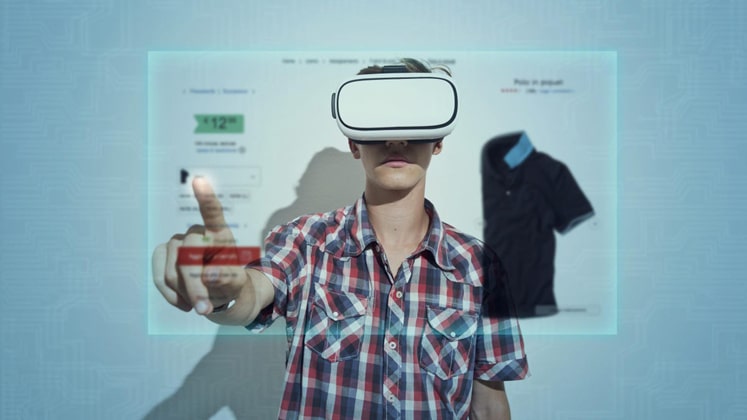
“Augmented Reality-enabled mirror technology will allow shoppers to virtually try on any clothing of their choice in retail stores using the kiosk. Once a shopper selects the clothes they want to try on, they simply need to stand in front of the try-on mirror and see what it would actually look like on them; collaborations with brands like Tommy Hilfiger will help accelerate changes in the retail industry,” commented George Yashin, CEO, ZERO10.
Studies have shown that the conversion rate of customers who use AR/VR-enabled smart mirrors is significantly higher than those who do not. Customers are more likely to purchase an item if they can see how it fits and looks on them, reducing the chances of returns and improving customer satisfaction and avoid waiting in long queues.
| “Looking at the results from our recent project with Tommy Hilfiger, where we integrated our AR Mirror into three of their global stores, we can say that customers are open to experiencing the technology, they are curious and excited to try it, to have fun and wear digital looks from their favourite brand.” George Yashin, CEO, ZERO10 |
“The real-time superimposing feature enables customers to try on clothes without stepping into a fitting room, saving time and effort. They can even experiment with items they hadn’t considered before, expanding their choices and boosting their confidence in their purchases, moreover, the purchase experience fosters loyalty and drives more purchases,” commented Beth Heddle, Senior Marketing Manager, Emperia.
Retailers across the globe provide immersive experiences that enhance brand engagement and loyalty, for instance, Zara has deployed 120 AR displays in its stores, allowing customers to view catalogue models demonstrating selected looks by holding up their phones to special sensors. Ralph Lauren has partnered with ZEPETO, a metaverse virtual game, to create a collection of virtual clothes and a thematic world where users can try on iconic Ralph Lauren looks. Louis Vuitton has transformed 35 of its storefronts into magnetic shows featuring virtual roller coasters, golden dinosaurs and balloons, creating an immersive experience that increases the brand appeal and customer loyalty.
H&M has used AR image filters on Instagram to promote its streetwear collection, allowing users to augment music videos and share their versions with friends and followers. Burberry’s Embedded Experience AR tool uses Google search to enable customers to integrate products into their environment, enhancing the immersive and entertaining nature of VR and AR shopping. Chanel organised an Augmented Reality Snow Globe event during Christmas, transforming a New York boutique hotel into a semi-digital shopping area that engaged customers both in-person and remotely through a special app and Snapchat lens.
Gucci has launched Gucci Virtual 25, a pair of neon sneakers that exist only in users’ photos created with AR technology and can be used in the Roblox game and social network VRChat when purchased through the Gucci app.
TopShop has implemented AR fitting rooms in its stores, allowing customers to try on clothes without needing to visit a traditional dressing room. Additionally, Prada has created the Prada Virtual Reality project, a set of videos available on popular platforms such as YouTube VR and VEER, offering users virtual tours of iconic Prada locations and glimpses of Prada’s collections and show staging.
Similarly, Macy’s has released AR software that navigates shoppers around their largest store, where the shoppers can locate products easily and it bridges real and e-commerce/ virtual stores.
| “I believe that the adoption of virtual reality technology in retail will be a game-changer, unlocking the next phase of growth for bricks-and-mortar stores. Currently, we are working around the AR segment and pushing the boundaries of retail with virtual reality. With the craze of the ongoing AR/VR, in no time, the adoption of such shopping activities will be mainstream”. Vineet Gautam, Chief Executive Officer, Bestseller India |
Potential challenges circling around the acceptance
The most important thing in the concept is actually fit and look. If the outcome is not correct, it may create a potential problem in the purchasing power of the consumers.
“There are some issues that may arise in the mass adoption of AR/VR try-ons across retail stores worldwide. One challenge is the cost of implementing and maintaining the technology. AR/VR technologies require substantial investment in hardware, software and training. Additionally, the fast-paced nature of technological advancements may result in the need for frequent updates, adding to the cost. Another challenge is the potential for technical glitches or inaccuracies in virtual try-on, such as differences in lighting or body proportions, which may impact the accuracy of the virtual fitting, the little hiccups are on the way but I am quite hopeful about the adoption across verticals,” mentioned spokesperson of a Retail Tech firm.
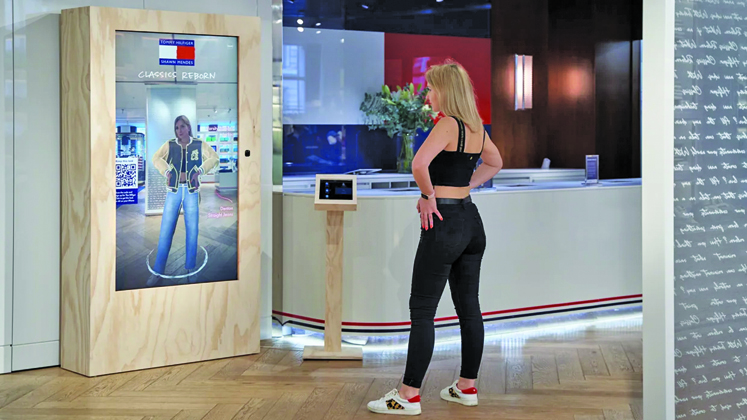
India’s role in AR/VR technology adoption is nascent but promising
Virtual try-on in e-commerce has gained popularity but in offline stores, still, it is in the nascent stage when it comes to India. It all began with the rising popularity of social media platforms like Snapchat and Instagram, which picked up the interest of retailers to dive into this segment and things are shaping better than ever.
In terms of virtual try-on adoption, India has been relatively slow compared to other countries. While some fashion retailers in India have started incorporating AR/VR try-ons in their online platforms, the adoption in physical stores has been limited. However, with the growing consumer demand for an enhanced shopping experience, it is expected that AR/VR try-ons will ride the storm in the Indian fashion retail sector in the coming years.
Virtual Try Ons are gaining popularity among Gen Z and millennials who are tech-savvy. With advancing technology, traditional trial rooms in India may soon be replaced by virtual changing rooms. These rooms enable customers to check fabric, colour, design and fit from their homes. Indian retail brands are adopting this technology to offer customers more designs and options without space limitations. “I consider India as a tech-savvy country and the adoption of this tech will be soon. I am quiet hopeful,” says Nikita Ramrakhyani, Co-founder, Unstitched.

